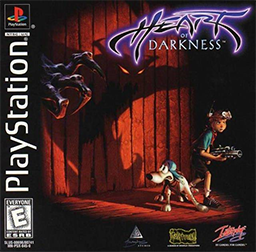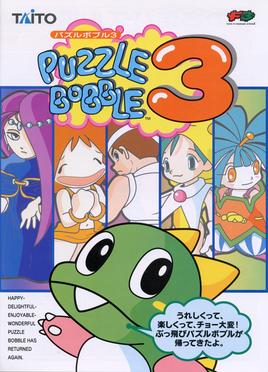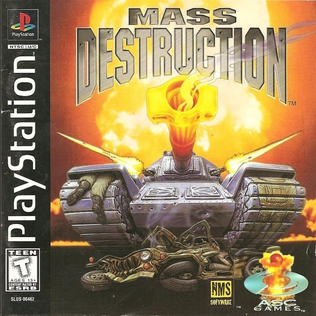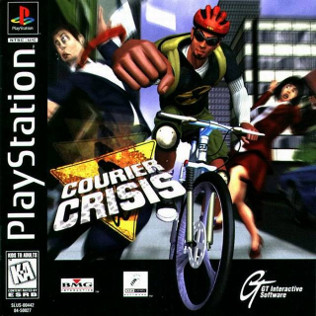
Hexen: Beyond Heretic is a fantasy first-person shooter video game developed by Raven Software and published by id Software distributed through GT Interactive on October 30, 1995. It is the sequel to 1994's Heretic, and the second game in Raven Software's "Serpent Riders" trilogy, which culminated with Hexen II. The title comes from the German noun Hexen, which means "witches", and/or the verb hexen, which means "to cast a spell". Game producer John Romero stated that a third, unreleased game in this series was to be called Hecatomb.

The PlayStation is a home video game console developed and marketed by Sony Computer Entertainment. It was released in Japan on 3 December 1994, followed by North America on 9 September 1995, Europe on 29 September 1995, and other regions following thereafter. As a fifth-generation console, the PlayStation primarily competed with the Nintendo 64 and the Sega Saturn.
Sonic Team is a video game developer owned by the Japanese video game company Sega as part of its Sega CS Research and Development No. 2 division. Sonic Team is best known for its Sonic the Hedgehog series and games such as Nights into Dreams and Phantasy Star Online.

Mortal Kombat Trilogy is a fighting game released by Midway in 1996 as the second and final update to Mortal Kombat 3 for the PlayStation, Nintendo 64, Sega Saturn and PCs. Further versions were also released for the Game.com and R-Zone. It features a similar basic gameplay system and the same story as Ultimate Mortal Kombat 3, but adds characters and stages restored from Mortal Kombat and Mortal Kombat II. New additions to the game included the "Aggressor" bar. The Brutality mechanic was introduced with this installment. The game was met with positive to mixed reviews upon release.

Heart of Darkness is a cinematic platform video game developed by French developer Amazing Studio for the PlayStation and Microsoft Windows.

Saturn Bomberman is an action video game by Hudson Soft for the Sega Saturn as the name implies. The twelfth installment in the Bomberman series, it was first released in Japan on July 19, 1996, in Europe in May 1, 1997, and in North America in September 4, 1997. It is best known for its multiplayer functionality for up to ten players. The game received praise from critics for its enjoyable gameplay and multiplayer, but received criticism for not advancing the Bomberman series enough beyond previous installments.

Rampage World Tour is an arcade video game released by Midway Games in 1997 as the sequel to Rampage. It was developed at Game Refuge by Brian Colin and Jeff Nauman, who designed the 1986 original. Ports were released for the Sega Saturn, Nintendo 64, Game Boy Color, PlayStation, and Microsoft Windows. It was re-released on Midway Arcade Treasures 2 and included in Rampage: Total Destruction.

Fighting Force is a 1997 3D beat 'em up developed by Core Design and published by Eidos. It was released for PlayStation, Microsoft Windows, and Nintendo 64. Announced shortly after Core became a star developer through the critical and commercial success of Tomb Raider, Fighting Force was highly anticipated but met with mixed reviews.

Puzzle Bobble 2 is a tile-matching video game by Taito. The first sequel to Puzzle Bobble, it is also known in Europe and North America as Bust-A-Move Again for arcades and Bust-A-Move 2: Arcade Edition for home consoles. Released into the arcades in 1995, home conversions followed for the PlayStation, Sega Saturn, Nintendo 64, and Windows platforms. The game was included in Taito Legends 2, but the US arcade version was included in the US PS2 version instead. Further ports for the Nintendo Switch, PlayStation 4, and Xbox One were released by City Connection alongside Puzzle Bobble 3 in February 2023.

Puzzle Bobble 3 is an action puzzle video game developed by Taito. The second sequel to Puzzle Bobble, it was released for arcades in September 1996 and later ported to the Sega Saturn, PlayStation, Game Boy, Nintendo 64 and Microsoft Windows. Like its predecessors, the player is tasked with shooting balls at groups of balls, creating groups of three or more, which are then removed from play. Further ports for the Nintendo Switch, PlayStation 4 and Xbox One were released in February 2023 by City Connection alongside Puzzle Bobble 2.

Dead or Alive is a 1996 fighting game developed and published by Tecmo for arcades. It is the first entry in the Dead or Alive series. Built on the Sega Model 2 hardware, it was released first in arcades in 1996, followed by home ports for the Sega Saturn in Japan during 1997, and for the PlayStation in all regions during 1998.

Thunder Force V is a horizontal-scrolling shooter video game developed and published by Technosoft for the Sega Saturn. The game was released in 1997, with the PlayStation port Thunder Force V: Perfect System released in 1998. It is the fifth installment in the Thunder Force series and the last one created by Technosoft. The story revolves around a combat unit formed to fight against the Guardian supercomputer, which went rogue after deciphering the code of a space vessel. The player pilots a starfighter through a 2.5D perspective; the environments are rendered in three dimensions but the player moves in a 2D plane.

Worms is a 2D artillery tactical video game developed by Team17 and released in 1995. It is the first game in the Worms series of video games. It is a turn based game where a player controls a team of worms against other teams of worms that are controlled by a computer or human opponent. The aim is to use various weapons to kill the worms on the other teams and have the last surviving worm(s).

Mass Destruction is a 1997 third-person action game developed by NMS Software and published by ASC Games and BMG Interactive. Released for MS-DOS, the Sega Saturn, and the PlayStation, the game puts players in control of a tank, and tasks them with destroying enemy forces. It has often been likened to Return Fire.

Micro Machines V3 is a racing video game developed by Codemasters, the third title of the Micro Machines series following Micro Machines 2: Turbo Tournament (1994) and the first set in a 3D game environment. It was originally released for PlayStation in 1997 followed by ports to Microsoft Windows, Nintendo 64 in 1999, and a 2D version for Game Boy Color in 2000

NBA Fastbreak '98 is a basketball simulator released for the Sony PlayStation in 1997. It takes place during the 1997-98 National Basketball Association season. It was published by Midway Games and GT Interactive. Originally announced under the title "Hardwood Heroes", the game was released with minimal changes as NBA Action 98 on Sega Saturn and Microsoft Windows, published by Sega. Another version was being developed by Z-Axis for the Nintendo 64 under the title "NBA Fast Break 64", with a prospective November 1997 release, but it was cancelled.

Courier Crisis is an action video game developed by American studio New Level Software for PlayStation and Sega Saturn in 1997.

NHL Powerplay 98 is a sports video game developed by Radical Entertainment and published by Virgin Interactive and Sega for Microsoft Windows, PlayStation, and Sega Saturn in 1997. It is the sequel to NHL Powerplay '96; there was no "'97" entry in the NHL Powerplay series. After Virgin opted not to release the game for the Sega Saturn, Sega acquired the rights and published the Saturn version under the title NHL All-Star Hockey 98 so as to make it a continuation of Sega's own NHL All-Star Hockey series.

















